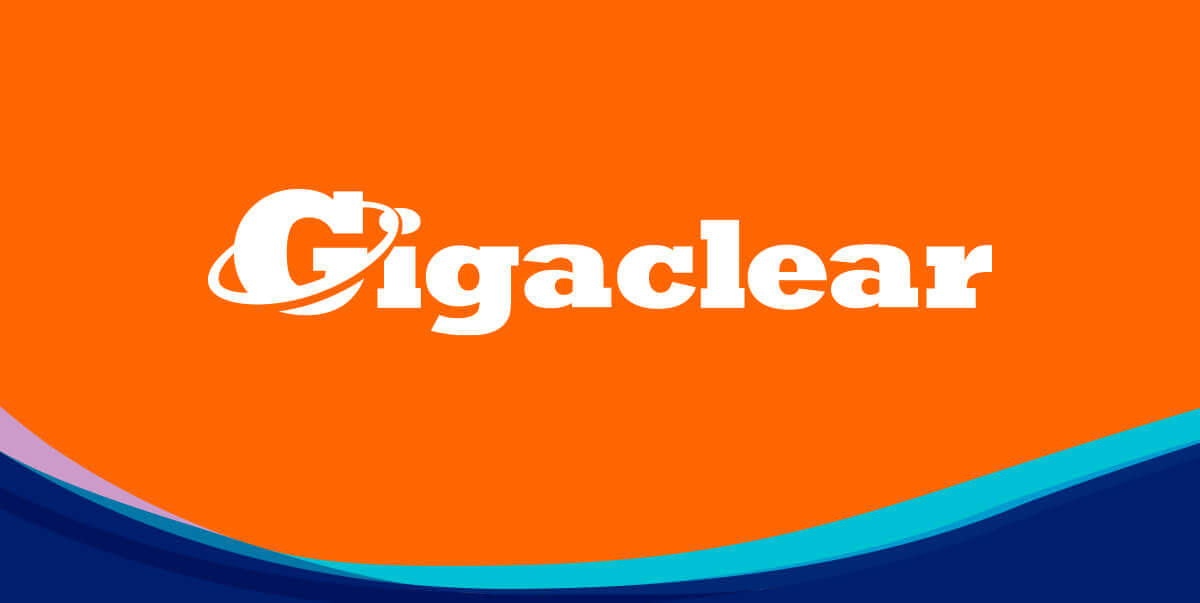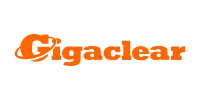Gigaclear broadband review: Is it any good?
Dan Howdle | November 3rd, 2023

Gigaclear aims to bring some of the fastest broadband in the country to rural locations which have been let down by Openreach and Virgin Media in their network rollout plans. It can readily be called an 'altnet' – an alternative network that doesn't piggyback off Openreach or anyone else. Your chances of getting it remain slim, with Gigaclear available to only around 300,000 UK homes. But then, you're probably not here reading this review unless you had an inkling it's available. So let's get into the details.
Key features
Here’s a quick overview of what you can expect to find in a Gigaclear broadband deal.
| Download speed | 200Mbps–900Mbps | Upload speed | 30Mbps–900Mbps |
|---|---|---|---|
| Broadband | Full fibre (FTTP) | Home Phone | No |
| Prices from | £17 per month | Contract length | 18 months |
Our review of Gigaclear broadband
Reasons to buy
- Very fast broadband
- Geared specifically for rural homes
- Excellent mesh router solution
Reasons to avoid
- Limited availability
- Community must want it
- No phone line available
Broadband speeds
Gigaclear is an unusual broadband provider. For one thing, its an alternative network (altnet) connecting homes via ultrafast pure fibre. Other broadband providers, such as those on the Openreach network (that's everyone except Virgin Media) offer fibre networks that are fibre optic only as far as the cabinet on the street. The remaining distance to your property is copper wire, which puts serious limitations on the speed you can get.
A pure fibre network (called FTTP or 'fibre to the premises' in the business) can deliver frankly insane (ultrafast) speeds. And unlike Openreach's FTTC (fibre to the cabinet) it can offer upload speeds that are the same as its download speeds – known as a 'symmetrical' connection. With Gigaclear, four packages are available at 200Mbps, 500Mbps, 600Mbps and 900Mbps. And if you can get it, Gigaclear has gotten a hell of a lot cheaper over the past year or so, with entry-level packages coming in at just £17 per month at the time of writing.
But with only 300,000 potential customers, your chances of getting Gigaclear are vanishingly small. And if you live somewhere rural, can't currently get it but hope to in the future, you're going to have to turn to your own community and drum up enough local support to make it worth Gigaclear's while. Don't get us wrong, what Gigaclear is doing is both fascinating and valuable, but don't raise your hopes too high that it will ultimately solve your own personal rural broadband woes. That road can be a long one.
Gigaclear's broadband speeds aren't as erm… clear as they could be, mind. It package names don't reflect the average speeds received by its customers. Actual speeds below, also including which router you'll get:
| Package | Download Speed | Router |
|---|---|---|
| Superfast 200 | 830Mbps | Linksys Dual-band |
| Ultrafast 500 | 600Mbps | Linksys Dual-band |
| Ultrafast 600 | 469Mbps | Linksys Dual-band |
| Hyperfast 900 | 200Mbps | Linksys Tri-band |
In terms of contracts, all Gigaclear contracts run for 18 months. This is a fairly typical contract length, and less relevant than it might be with some other providers, since if you live somewhere you can get Gigaclear we think it highly unlikely you're ever going to switch to the handful of Mbps you're probably going to be able to get with any other provider.
-
 Superfast 200
Superfast 200- 200Mb average speed +
- Unlimited usage +
- No phone line
£17.00 per month(prices may change during contract)£0 one-off cost18 month contract -
 Ultrafast 400
Ultrafast 400- 400Mb average speed +
- Unlimited usage +
- No phone line
£20.00 per month(prices may change during contract)£0 one-off cost18 month contract -
 Hyperfast 900
Hyperfast 900- 900Mb average speed +
- Unlimited usage +
- No phone line
£29.00 per month(prices may change during contract)£0 one-off cost18 month contract
Upload speeds
All Gigaclear broadband packages arrive with symmetrical speeds. That means that whichever upload speed you select – 200Mbps, 300Mbps, 600Mbps, 900Mbps – you'll get the same upload speed. However, you should refer to the table above since not all of Gigaclear's upload and download speeds are, on average, what its package naming suggests. Upload speeds are generally less useful than download speeds, but if you are able to get upload speeds this fast, there's a good case to be made for using cloud storage for all your data storage requirements.
Most other providers offer upload speeds that are only a third or less (often much less) of their download speeds. Most of the stuff we do on the internet is download-oriented – drawing information or pictures or files or video from a remote server onto a device. Very little is upload oriented – sending those things from a device to a remote server – so most of us barely ever notice.
Availability
We can't produce a map for you showing where Gigaclear is available, even though we'd like to. The reason for that is the way Gigaclear decides on where to bring its broadband. It's rural communities, and they have to be acting in concert in their demand for the service. There's a threshold of interest required and therefore availability is rather dotted about.
To give you a broad idea of where you can get it, Gigaclear is available in some parts of the following locations:
- West Berkshire
- East Berkshire
- South Herefordshire & The Forest of Dean
- North Gloucestershire
- South Gloucestershire
- North Herefordshire
- Epping Forest District
- Uttlesford
- Central North Essex
- Somerset
- Devon
- West Oxfordshire
- North Wiltshire
Router and installation
Router
Gigaclear has two different model versions of essentially the same router that it offers its customers. A tri-band model for its Hyperfast 900 customers, and a dual-band version of that router for everyone else. The number of bands refers to the number of discreet networks you can have your router providing your home. The net result will be more range and less signal interference.
The router in question is the Linksys Velop Wi-Fi 6, and here are the specs:
| Category | Details |
|---|---|
| Dimensions |
Width x Depth: 7.9cm x 7.9cm Height: 18.5cm |
| Power Supply |
Input: 100-240V AC 50/60Hz 0.7A Output: 12V DC 2A |
| Security | WPA2 personal wireless encryption |
| Wi-Fi |
Wi-Fi Mesh Connectivity for Seamless Wi-Fi and Simultaneous Streaming Wi-Fi AC2200 (867 + 867 + 400 mbps) with mu-mimo 2.4 GHz radio - 400 Mbps 5 GHz radio 1 - 867 Mbps 5 GHz radio 2 - 867 Mbps Simultaneous Tri-Band IEEE 802.11 B/g/n – 2.4 GHz – 256 QAM support IEEE 802.11 B/n/ac – 5 GHz – 256 QAM support Beamforming - Beamforming for 2.4 GHz and 5GHz bands Seamless roaming technology |
Installation
Installation is not as simple as it is with any other provider. Most broadband deals will arrive via the landline you already have wired into your home. In the case of Gigaclear, it has to physically lay the cable from the nearest point of termination (or POT) to your house. First, that means sending a surveyor to your property to properly understand not only your property, but the route from your property to the nearest POT.
You will need to agree on the route, including any digging/landscaping required beforehand, as well as where the network termination equipment (NTE) will be placed in your house. The NTE is basically the breakout box inside your property where your connection to Gigaclear's network terminates. Gigaclear will have to dig a trench on our property to lay the cable, and drill a hole in the wall of your house through which to feed it to the NTE.
If this all sounds super-destructive, don't worry – most times everything will look cosmetically exactly as it did before the work was done.
Customer service
With Gigaclear being such a small provider, there is no record to be found in any Ofcom report showing how it has been doing with its customers over the years. What we have instead is Trustpilot, where customers go to review their broadband service. At the time of writing, Gigaclear has an average Trustpilot score of 4.4 out of 5.
This shows substantial improvement since we last looked in on Gigaclear during the pandemic years, raising its average customer score from 4.1 back in 2022.
Customers with issues can get in touch with Gigaclear by calling 01865 591131 from 9am-7.30pm Monday to Friday, and from 10am-4pm on Saturday. Alternatively, you can send an email to support@gigaclear.com for advice and support.
Our verdict: Excellent
If you can get it, get it. No other specifically rural-focused broadband solution is going to be as fast or reliable as Gigaclear. There are simply no drawbacks here as there are with 4G/5G home broadband (unreliable, often slow), satellite broadband (huge latency issues, expensive) or any other rural broadband solution. Maybe the fact you can't get a landline from Gigaclear could be seen as a downside, but there's nothing stopping you keeping your BT line if you need it.
The main thing to remember with Gigaclear is that it's a rural provision specialist. If you live in a village, hamlet, or even on a farm and you have no chance of fast broadband this decade, Gigaclear could be your saviour, and what's more will understand your circumstances better than any other provider.
If you're looking for realistic alternatives, you probably already know what the deal is where you live. It's likely to be a choice of poor speeds on an Openreach network provider such as BT or Sky, unavailable Virgin Media, or some sort of mobile broadband solution. If you can get Gigaclear, jump on it, you lucky so-and-so!